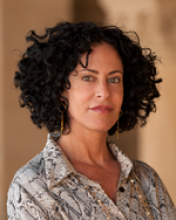What Is It
Many people identify strongly with the ethnic or racial group to which they belong – as Jews, or African-Americans, or Latinos. But to which groups does a person truly belong? President Obama has a white mother from Kansas and an African father from Kenya. Why is he seen as our first African-American President, rather than our forty-fourth white president? How does racial identity work? Is such identification a positive or a negative factor in a person's life? Must we choose among our potential identities? Ken and John discuss racial and bi-racial identity with Michele Elam from Stanford University, author of Mixed Race in the New Millennium.
Listening Notes
Biracial identity was a hot topic well before Barack Obama, born of a black father and white mother, became President. But now the questions surrounding it have become even more salient. What is biraciality? Is it biologically definable? Can people choose which race to be, or are racial categories forced on them by society? Are biracial individuals pushing our notions of race to the breaking point? Is the world moving toward an era in which the only race is the human race, or will racial categories stick with us forever?
To begin, John and Ken consider whether race is a "biological reality". Biologically, are people of different races are so similar that interesting distinctions cannot be drawn between them? And if that's the case, is there no such thing as race? Race certainly has biological pretensions---so if the notion of race is biologically empty, it would seem that we got something from nothing.
Without a biological foundation, is social practice enough to ground the notion of race? Is claiming that someone is black (or white, or both) is a statement about his cultural heritage rather than his genes? In this sense, being black might be more akin to identifying (or being identified) as American than to being a mammal. Culturally, Obama is more white than black---but then why is it socially unacceptable for him to identify as white? And is it "appalling" (as one caller says) that Obama consistently self-identifies as black, rather than biracial?
Michele Elam, professor of English at Stanford and director of the university's Program in African and African American Studies, highlights that racial categorization is associated with both negative and positive things---for example, on the one hand, facilitating harmful discrimination, while on the other fostering healthy and tight-knit communities. In the rest of the show, she touches on whether race is an intrinsic or relational property of persons, whether racial categories are always based on physical appearance, and whether we should even want to arrive at a postracial age.
The show ends with a postracial haiku from a caller:
We're all part of the twenty-
first century's blend.
- Roving Philosophical Report (seek to 7:05): Julie Napolin interviews John's granddaughter Anissa, who identifies herself as biracial with Irish and African American blood. She doesn't see her African American family members often, but she feels like an outsider when she does. Yet she doesn't quite fit in with her white family, either! When she's around them, no one (not even her) recognizes that she's half white. In fact, her whiteness only becomes apparent to her when she's around black people. Understandably, this interstitial location between races is a lonely place to be. That's why Anissa is considering Howard University for college. She's heard that, even though Howard is historically black, it's a place where biracial people can discover their own identities in a supportive environment. And that's just what Anissa wants!
- 60-Second Philosopher (seek to 49:20): Ian Shoales investigates the "tragic mulatto" stock character, a person (usually female) of mixed race who tries to masquerade as white, often to tragic consequences. Ian traces a lineage of such characters from the 1933 novel Imitation of Life, in which a poor white widow hires a black nanny with a light-skinned daughter, through subsequent films inspired by the novel, paying special attention to the issue of racial stereotypes in the film industry.



